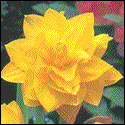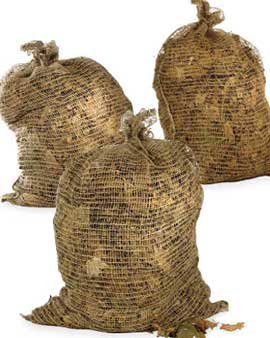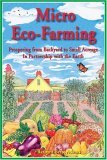
FREE Garden Journal!!
Join "Garden Notes" and plan for Harvest Success as you track and record your gardening progress. Your Free Personal Garden Journal has pages for jotting down notes on the seeds you start, your new plantings, when you fertilized, and even a graph to plot a new garden.
How To's | Technique | Practical Advice | Children | Internet Gardening | Vermicomposting | Pest Management


Easy Composting Method
Save time and energy with this easy composting trick.
If you aren't already making compost, you'll be amazed at how easy it is. Don't believe us? Try out this plan and then you tell us how hard you worked.
- Watch your neighbors bagging their fall leaves. (Be a good neighbor: avoid
looking too relaxed while they work.)
- Offer to take the bags of leaves from your hard-working neighbors before
they drag the bags to the curb. (If you can, get a few bags of grass clippings
to mix with the leaves or, better yet, grab mixed bags from neighbors who cut
the grass and shred leaves with their lawn mowers.) If you're too shy or proud
to ask for bags of leaves and grass, snitch them after dark. No one will report
you if you get caught.
- Bring the bags home, poke some holes in the sides (near the top and bottom)
to let oxygen and some water in and carbon dioxide and excess water out. Moisten
the leaves thoroughly.
- Scoop up a shovelful or two of garden soil and pour the soil into the bags.
- Mix by shaking or rolling the bag. Mix again occasionally every few weeks
and moisten the leaves when they dry out.
- In 2 to 3 months, pour out the dark, crumbly stuff inside. Technically
speaking, this is "leaf mold." But for simplicity's sake, call it "compost"
and use it as a mulch, soil amendment and fertilizer in your garden. About a
half-inch to an inch layer on top of the soil will feed your plants, prevent
plant diseases, suppress weeds, and conserve water.

Eco-Friendly Alternatives to Plastic Leaf Bags
Fast and easy
If ignoring bags of leaves for a few months is just too simple or slow for you, you can try a little harder and get faster results. Shred the leaves first, then pile them up alone or mixed with grass clippings and kitchen scraps. Keep the mix moist.
You don't even need a shredder to turn whole leaves into smaller pieces that will decompose faster. Just run them over with your lawn mower. Or put the leaves into a plastic garbage can and then use a string trimmer (aka weed wacker) like an egg beater to chop them up. Wear goggles and a dust mask when you do this to protect yourself from flying dust and debris.
Search on
Sustainable Living:








